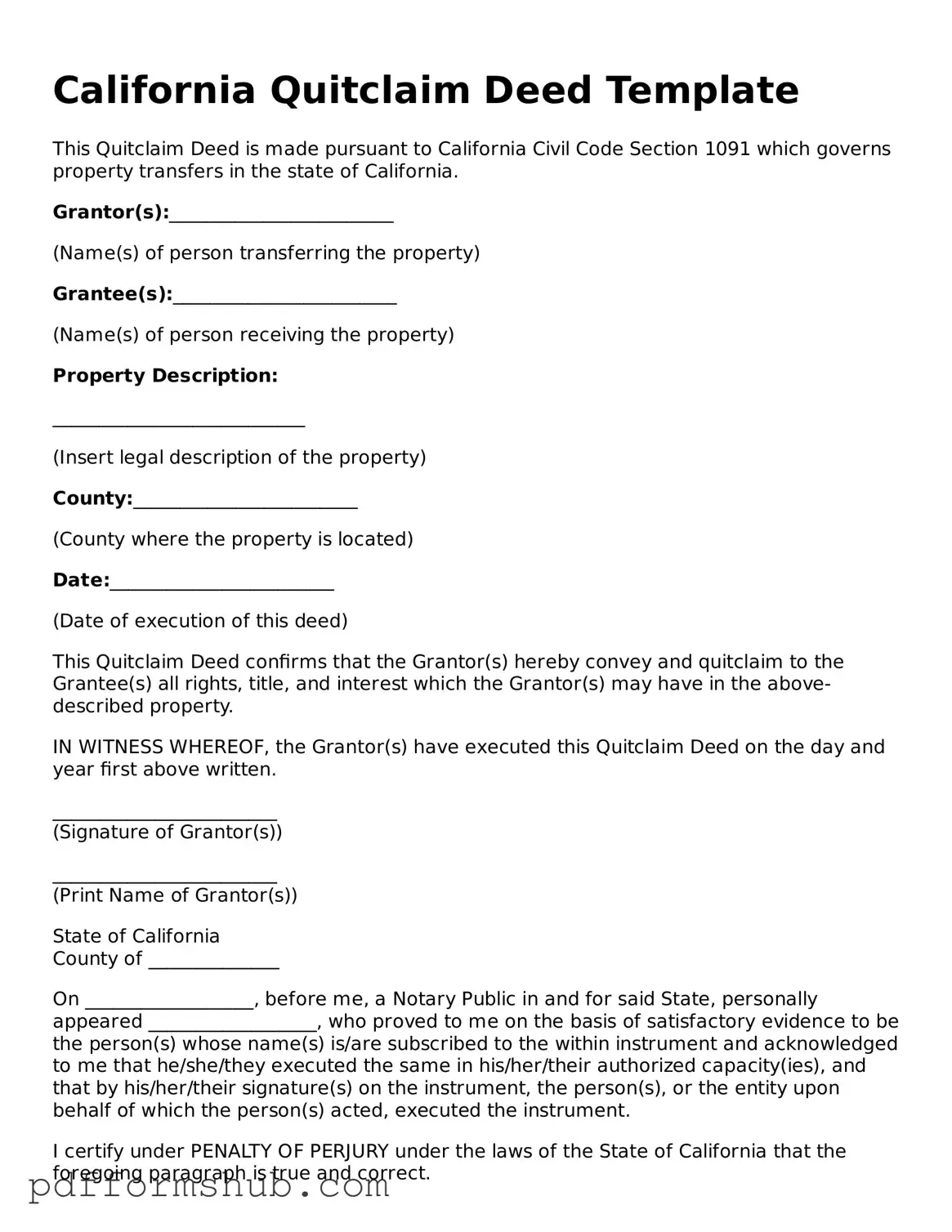In the realm of property transactions, the California Quitclaim Deed serves as a vital tool for individuals looking to transfer ownership of real estate. This form is particularly useful when the parties involved have a pre-existing relationship, such as family members or business partners, as it allows for a straightforward transfer without the complexities typically associated with traditional sales. Unlike other types of deeds, a quitclaim deed does not guarantee that the property is free of liens or encumbrances; rather, it conveys whatever interest the grantor may have in the property at the time of the transfer. This form is commonly employed in various situations, including divorce settlements, estate planning, and adding or removing names from a property title. Completing a quitclaim deed requires careful attention to detail, including the accurate identification of the property and the parties involved, as well as the necessary signatures. Once executed, the deed must be filed with the county recorder's office to ensure that the transfer is legally recognized. Understanding the nuances of this form can empower individuals to make informed decisions about their property rights and facilitate smoother transitions in ownership.
